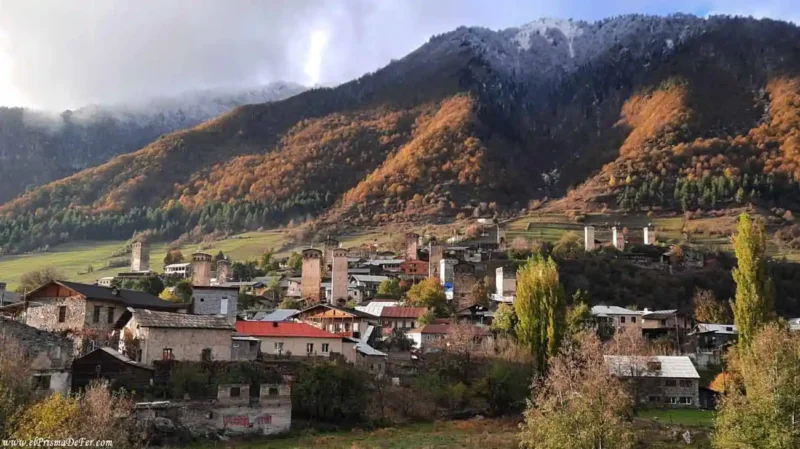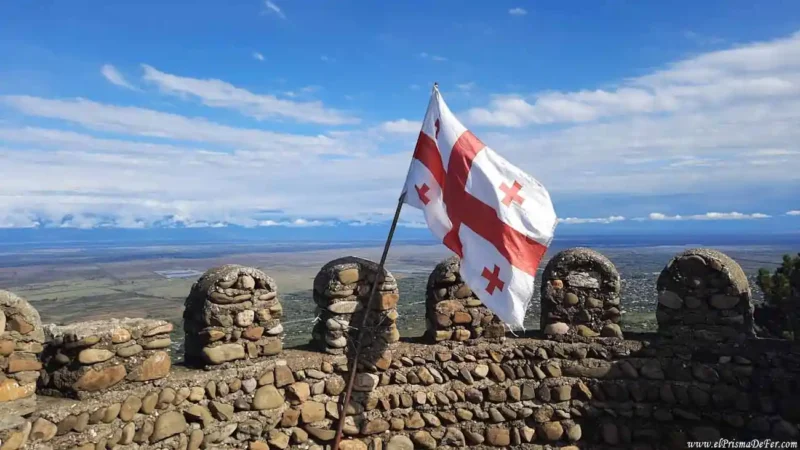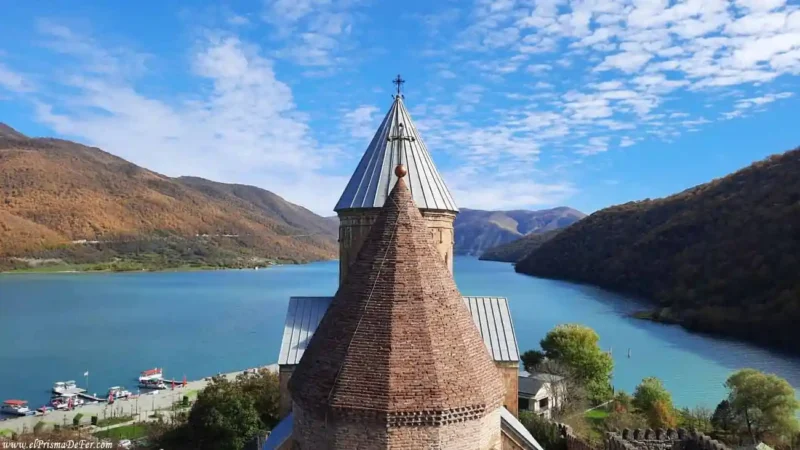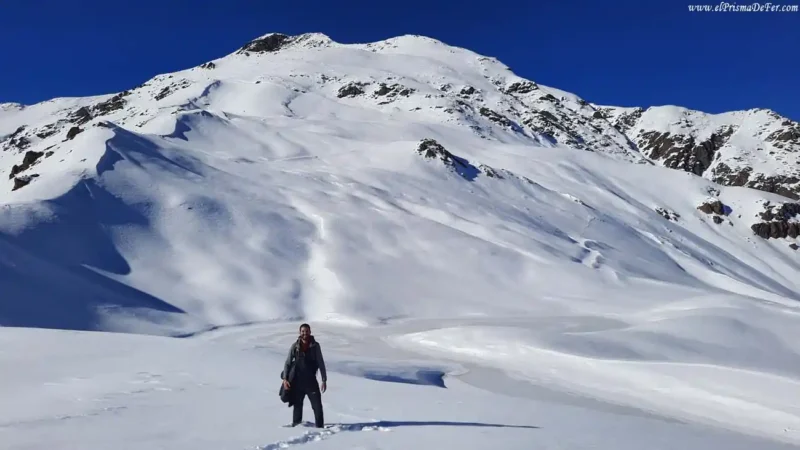Walking from Mestia to Ushguli is one of the experiences I enjoyed most during my entire trip along the Silk Road. This trek passes through villages amid snow-capped mountains, green meadows in summer, and the iconic medieval defensive towers that make the Svaneti region unique in the world. Beyond the natural beauty, which is already quite a lot, the route allows you to delve into rural Georgian life, where tradition still permeates every village.
For several days, the trail winds through valleys and glaciers, offering spectacular views at every turn. Finally arriving at Ushguli, considered one of the highest inhabited villages in Europe, is like entering a setting frozen in time: stone houses, ancient towers and a natural environment that will captivate anyone. This trek is not just a hike; it's a true cultural and scenic immersion in the heart of the Caucasus.
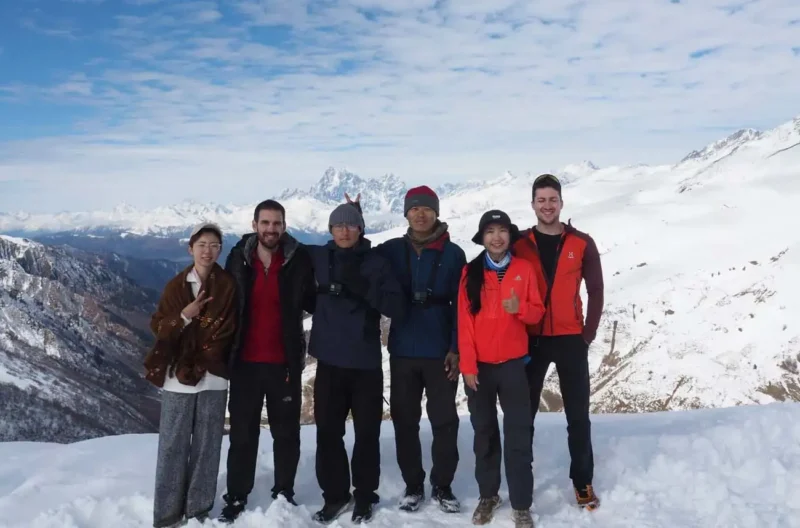

Table of Contents
🗺️ Technical details of the Mestia to Ushguli Trek
| Start |
| Mestia |
| Final |
| Ushguli |
| Duration |
| 2/4 days |
| Distance |
| 56 km |
| Estimated time in hours |
| 19 hs |
| Max. Altitude |
| 2700m |
| Difficulty |
| Moderate |
| Signaling |
| Marked and well-signposted trail |
| Water/food |
| Water and food can be obtained in any of the villages and rivers in the area. |
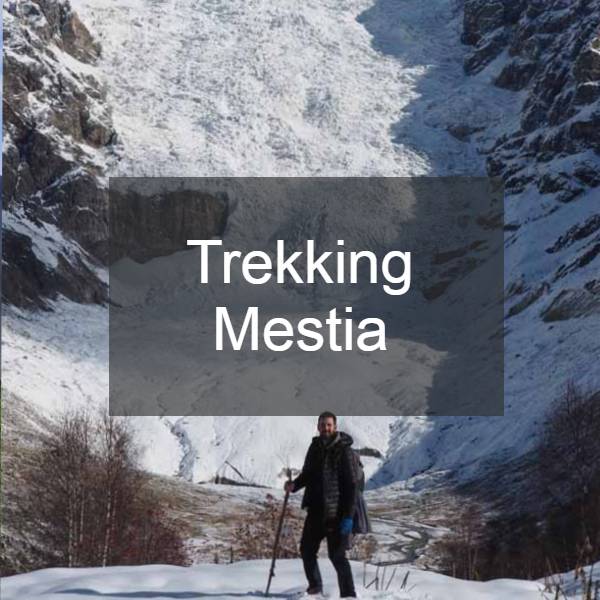
Do you want to follow this route precisely?
Download the KML/KMZ files for the Mestia-Ushguli and Mestia-Koruldi Lakes treks in the Svaneti region of Georgia and open them in apps like Maps.me or Gaia GPS to view the complete route offline. Ideal if you want to navigate the valley with confidence, even without a signal.
Get the files from Gumroad for a small contribution.
Mestia: the gateway to Svaneti
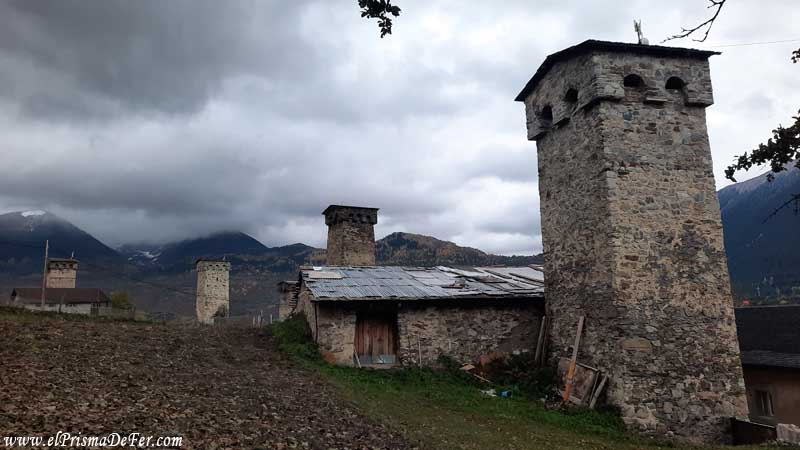
Mestia is the ideal starting point for organizing trekking to Ushguli and, in general, for exploring the mountainous region of Svaneti. It is a small town surrounded by imposing mountains, where traditional stone defensive towers mingle with accommodations, restaurants, and agencies that make life easier for travelers. Despite its tourist boom in recent years, it still maintains that authentic feel that makes it a special destination.
Besides being a logistics hub, Mestia has a lot to offer. You can visit the Svaneti Museum of History and Ethnography, walk through its quiet streets admiring the Svan towers, or simply enjoy the local cuisine in one of its family-run restaurants. It is also an excellent base for short hikes, such as trekking to the Chalaadi Glacier or climbing to the Koruldi Lakes, which offer spectacular views of the Caucasus.
What is the best time to trek from Mestia to Ushguli?
The best time to trek from Mestia to Ushguli is between June and mid-September, when the trails are snow-free, the days are longer, and the weather conditions are more stable. Accommodations in the intermediate villages are also more frequently available during these months, which greatly facilitates the logistics of the trek.
In spring (April-May)the trails slowly thaw, the rivers flow rapidly, and the meadows begin to bloom; ideal for those who enjoy greenery and flowers, although there may be muddy stretches.
Autumn (September-October) offers warm, reddish colors, cool weather, and, towards mid- and late October, the first snowfalls may appear, transforming the landscapes into epic postcards.
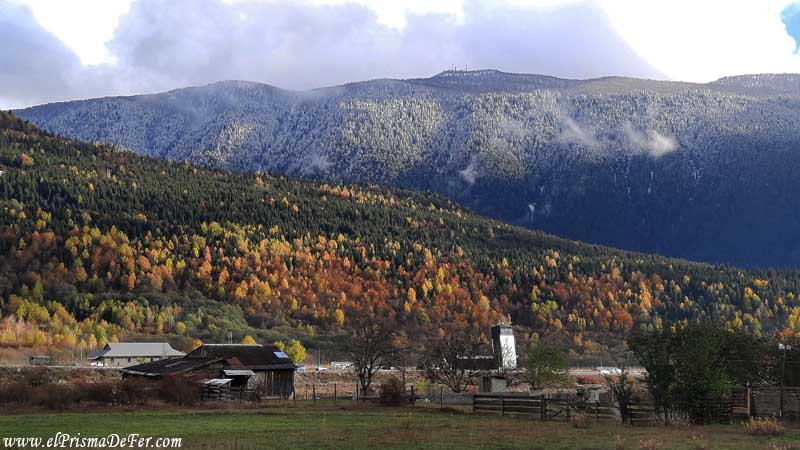
In winter (November-March) the trails are covered in heavy snow and most guesthouses may be closed.
I did the trek at the end of October, and by that time, there had already been several snowfalls in the region, especially noticeable at the highest point of the trek, between Adishi and Iprari, where we had to walk on snow. While it was an extra physical challenge, the payoff was spectacular: the mountains and villages of Svaneti were covered in a blanket of white, giving them an epic air, like something out of a fantasy story. It was more demanding, yes, but also much more special.
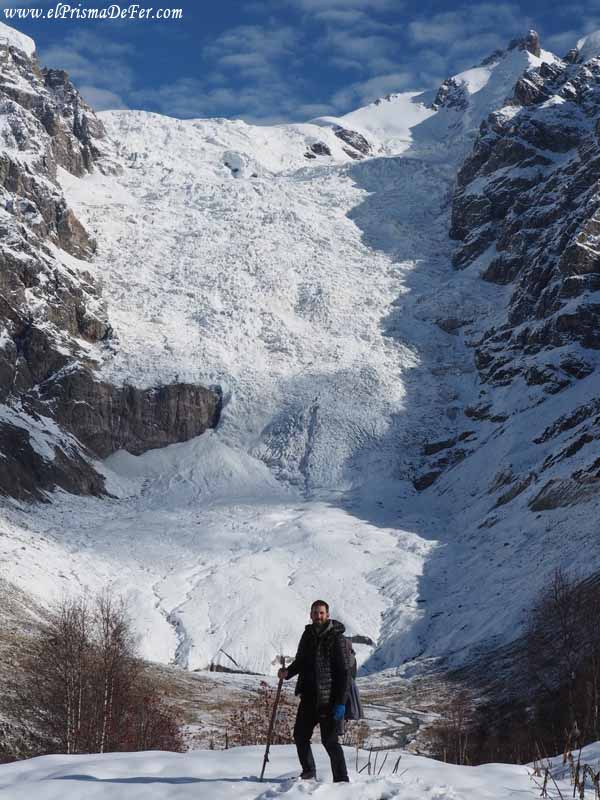
How long does the trek from Mestia to Ushguli take?
The trek from Mestia to Ushguli typically takes between 2 and 4 days, depending on the traveler's pace and whether they decide to advance any part of the trek by car. The classic route takes 4 days, spending each night in different villages in the valley, allowing for a leisurely experience. However, those who hike faster or have less time can complete it in 2 or 3 days, shortening stages or combining transportation for certain sections.
It is important to note that Ushguli is also accessible by car from Mestia. Many travelers choose to visit the village directly on a day tour, which provides a return trip in the same day. This option is practical if you only want to see Ushguli and its famous medieval towers, but trekking has a unique value: exploring the Caucasus landscapes on foot, passing through remote villages, and experiencing a much deeper connection with the surroundings.
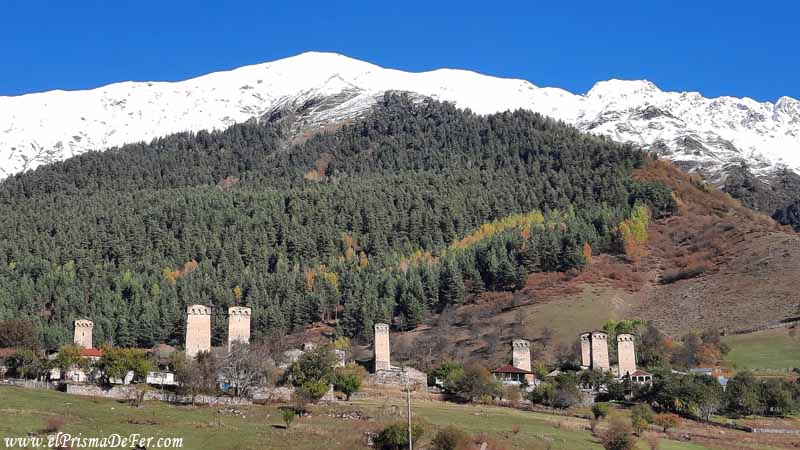
In my case, I ended up doing the trek in just 2 days, because a fairly strong bad weather front was approaching and I had to pick up the pace. On the first day, I made my way to Adishi, and on the second, I hiked to Iprari, where I finally caught a ride with a group of friends I'd made along the way, which took us straight to Ushguli. Although it was a more intense trek, the experience of hiking at a good pace among snow-capped mountains and medieval villages was unforgettable.
Where to sleep during the trek
One of the great advantages of trekking from Mestia to Ushguli is that you don't need to bring a tent or camping gear. Along the entire route, you'll pass through villages where local families offer accommodation in guesthouses or family homes, ready to welcome travelers. These are usually simple but comfortable and almost always include a home-cooked breakfast and dinner, although prices can be a bit high.
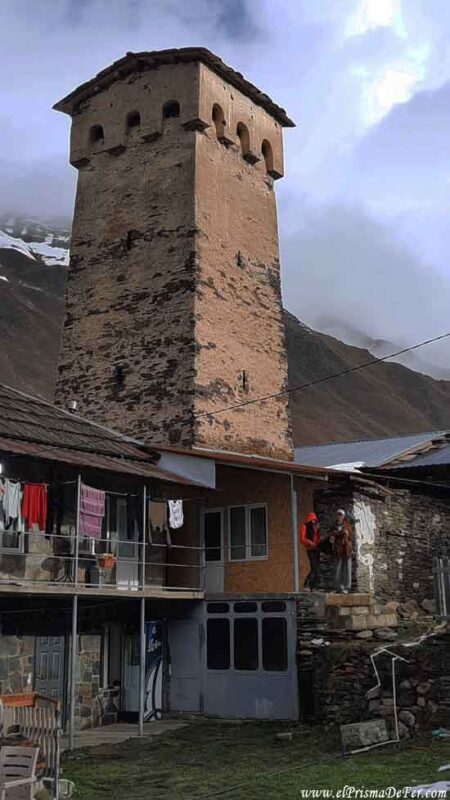
The most common towns to spend the night on the classic 4-day route are:
- Zhabeshi (first night)
- Adishi (second night)
- Iprari (third night)
- Ushguli (fourth night)
Whether you decide to trek in 2, 3, or 4 days, you'll always find options for sleeping under a roof, which makes logistics much simpler. Plus, staying in these houses is also an opportunity to share a meal with local families and try the region's typical food.
Practical tips for trekking
- Transportation: To get to Mestia from Zugdidi (train connection from Tbilisi), the most common way is to take a marshrutka, which is waiting at the station exit. From Ushguli, you can also return to Mestia by marshrutka or shared taxi, so you don't have to worry too much about the return trip.
- Cash: There are no ATMs in the villages and no cards are accepted, so it is essential to carry enough cash (Georgian lari) to pay for accommodation, meals and transportation.
- Climate and clothing: The weather in the Caucasus is very changeable, even in summer. Snow can occur in October (as it did for me), so it's a good idea to bring a good coat, a waterproof jacket, and waterproof trekking shoes.
- Signal and Maps: Cell phone signal is limited on some sections of the trek. I recommend downloading offline maps from Maps.me or AllTrails in advance, as the trail may not always be well marked.
- Food: You can buy supplies in Mestia or rely on the meals at the guesthouses, which are usually plentiful. However, bringing snacks and nuts will help you maintain your energy during the hike.
- Difficulty: Although the trek is not technically complicated, it does require good physical condition, as there are long stages with significant elevation changes, especially in the mountain passes area.
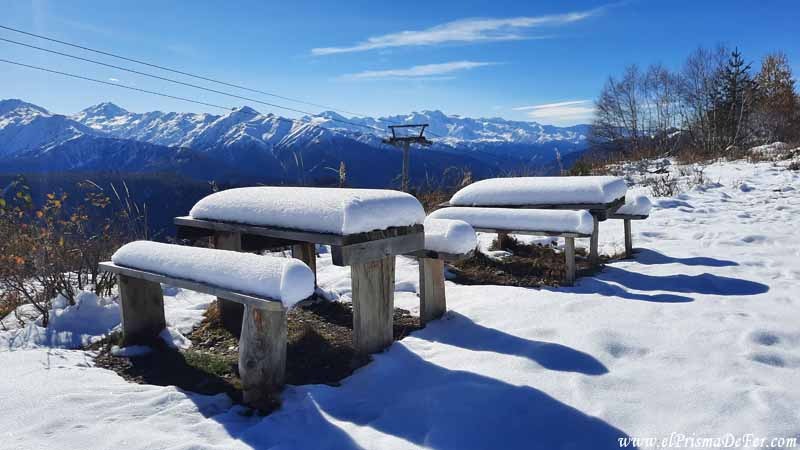

Map with the highlights of the Ushguli trek
Details of the trek from Mestia to Ushguli
I'm going to count the trekking as if it were 4 days of walking, which is the most common way most travelers do it. However, as I mentioned before, the route can be adapted to suit time and conditions: some complete it in just 2 or 3 days, moving faster or using transportation for certain sections, while others prefer to take it easy over 4 full days to enjoy each village and each landscape.
Day 1: Mestia – Zhabeshi
| Distance |
| 17 km |
| Estimated time |
| 4.45 hs |
| Elevation Profile |
| From 1.400 mts to 1.900 mts |
The trek begins in Mestia, the heart of the Svaneti region and a must-see for adventurers who want to explore the landscapes of the Caucasus. From the start, the hike begins with a gentle climb that accompanies the exit from Mestia, allowing you to acclimatize and get into the swing of things.
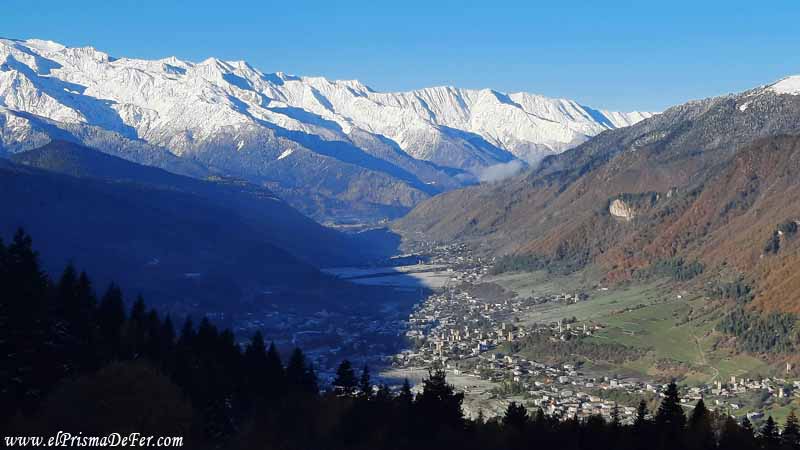
Afterwards, the slope becomes more constant and steeper, crossing a wooded area first, until reaching a hill where a sign indicates that we are on the right path.
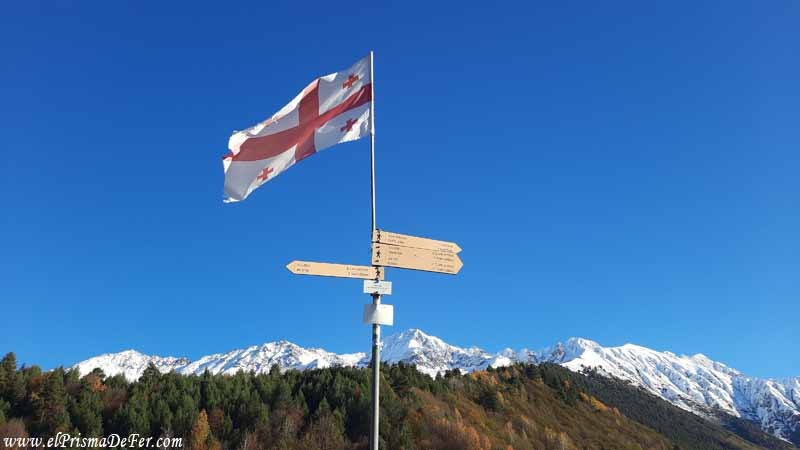
From that point, where we can already appreciate some of the beauty of the Caucasus, the route descends into the valley, marking the beginning of the succession of villages we pass through along the trek.
The trail passes through small forests, pastures, a river, and scattered villages, where traditional medieval Svan towers still stand, seemingly keeping watch from above.
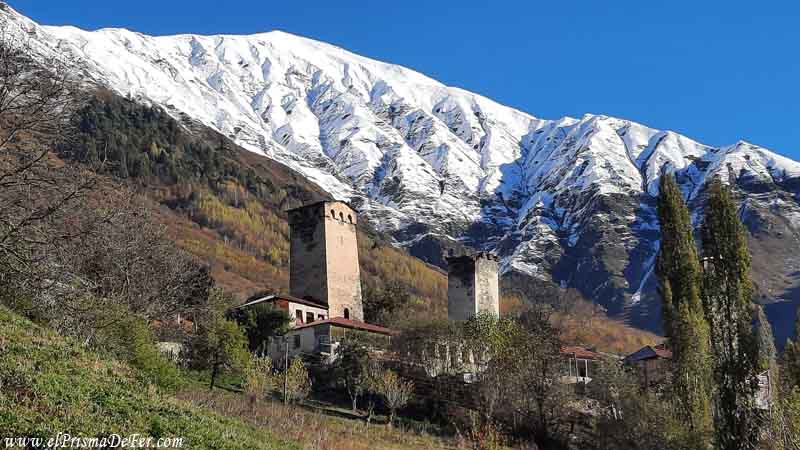
This section is generally fairly flat, but you'll begin to get your first panoramic views of the mountain range. The hike typically takes between 5 and 6 hours, depending on your pace and the stops.
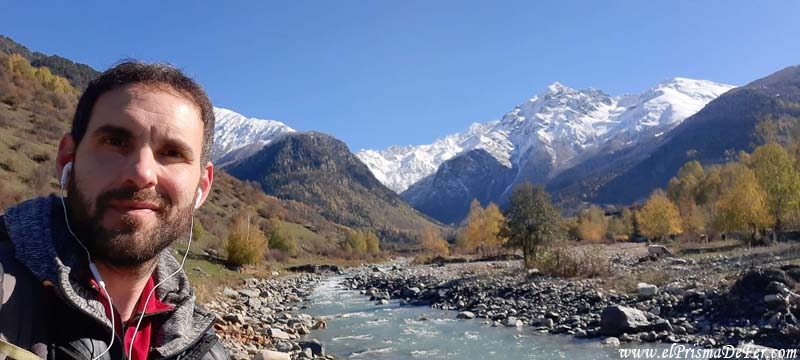
The day usually ends in Zhabeshi (or a nearby village), where there are family-run guesthouses offering beds and home-cooked meals.
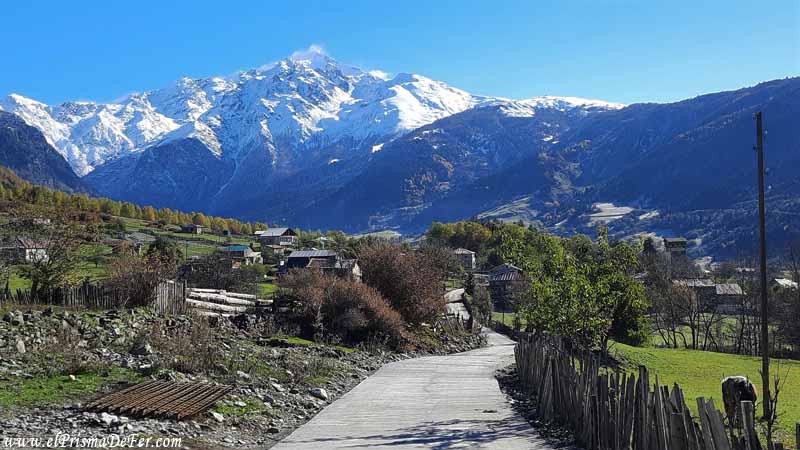
Day 2: Zhabeshi – Adishi
| Distance |
| 10 km |
| Estimated time |
| 3.20 hs |
| Elevation Profile |
| From 1.600 mts to 2.500 mts |
The second day is one of the most beautiful, as the landscape begins to become more alpine, revealing spectacular views of snow-capped mountains. The trail climbs steeply, offering panoramic views of the valley below.
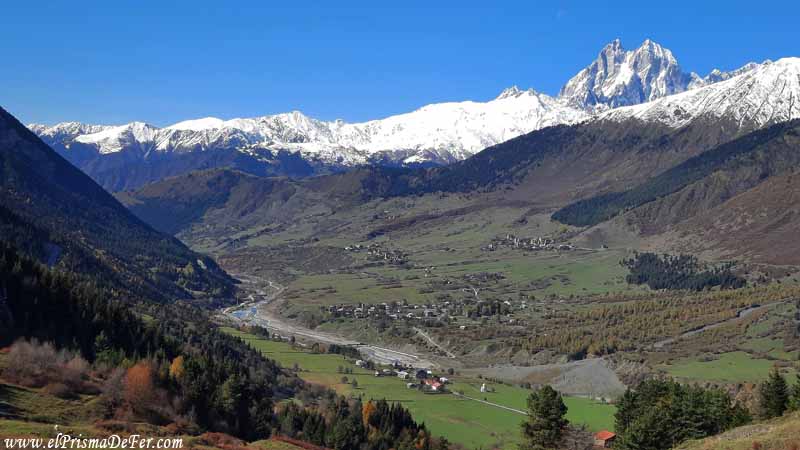
The trail winds through forests and small streams from melting snow, which at the time I hiked were quite treacherous due to the frozen, slippery ground.
After a short walk, you reach a well-known ski resort in the area, which may be open or closed depending on the season.
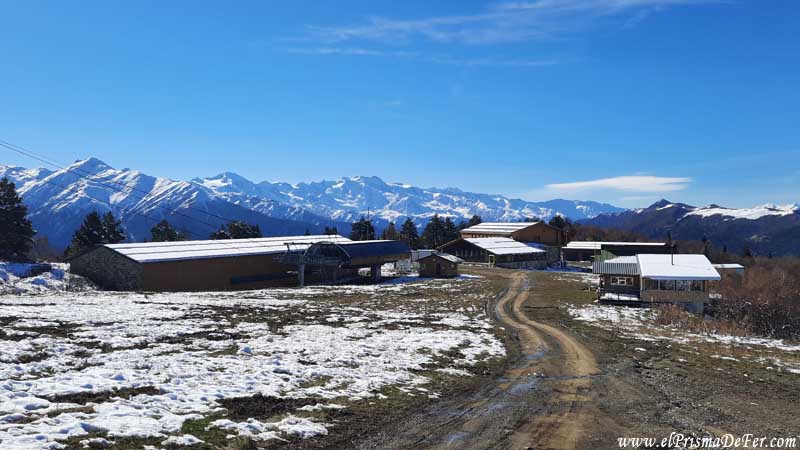
At the end of October, when I was there, snow had already covered much of the terrain, giving the trail an epic and magical feel that made every step worthwhile.
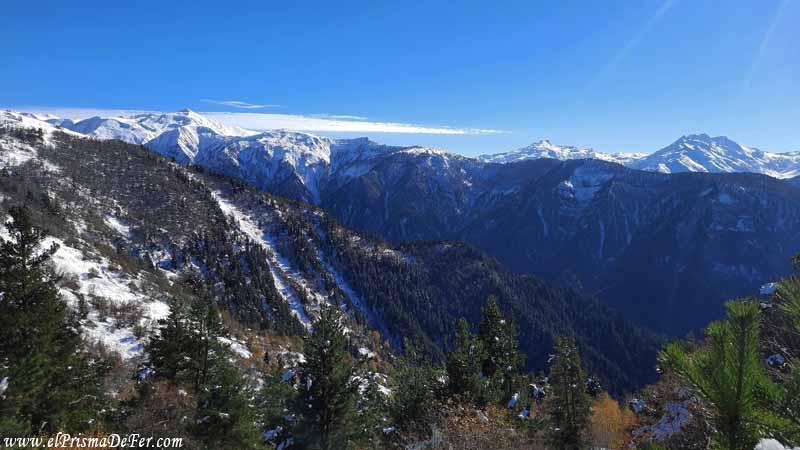
Adishi is our destination for this day, a small, remote village that seems frozen in time. Just a few stone houses and medieval towers make up the hamlet, surrounded by towering mountains.

I stayed in a shared room at the Nado&Tarzan guesthouse, where the treatment was not what I expected, and the prices were a bit inflated (maybe the time of year had an influence), around 20 leri for the night and 30 for dinner.
It's important to note that this stage isn't too long, so some travelers choose to reach it in a single day, departing from Mestia. However, it is recommended to spend the night in Adishi, as the following day is the most demanding and no villages are crossed until well into the day.
Day 3: Adishi – Iprari
| Distance |
| 17 km |
| Estimated time |
| 7 hours |
| Elevation Profile |
| From 1.950 mts to 2.700 mts |
This is undoubtedly the most challenging day, and also one of the most spectacular, of the trek. From Adishi, the trail begins with a river crossing that, depending on the season, may require the assistance of a local horse or even soaking your feet in icy water.
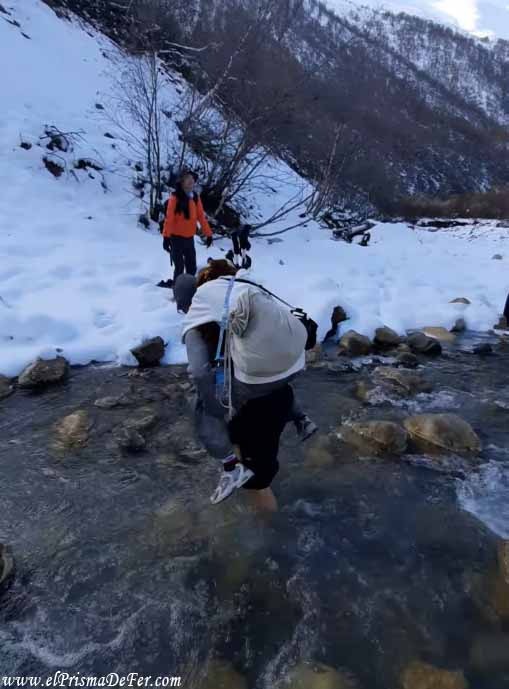
Once past this stretch, the toughest climb of the route begins: the Chkhunderi Pass, which reaches over 2,600 meters above sea level. The hike on this section is demanding, especially if there's accumulated snow, as I experienced in late October.
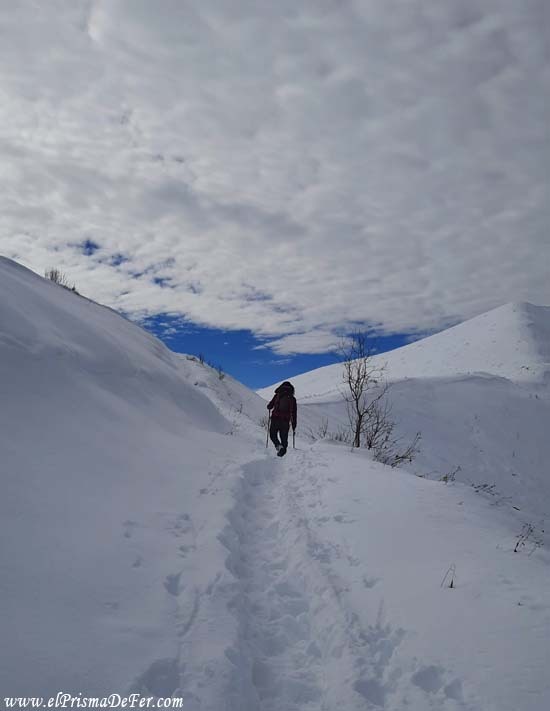
But every step is worth it: from the summit, an incredible panorama of the Adishi Glacier and the surrounding mountains opens up, a postcard that will be etched in your memory forever.
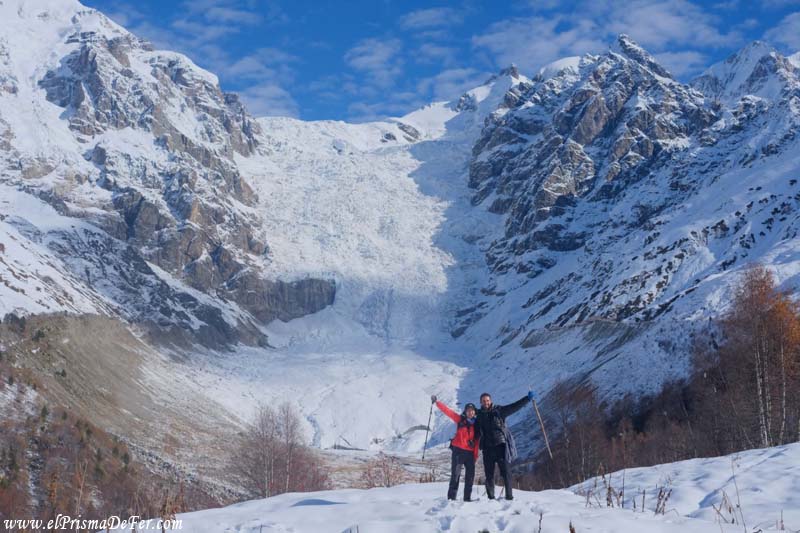
The mountain pass is the ideal place to rest a while, have a snack, and enjoy the best views we'll have throughout the trek to Ushguli.
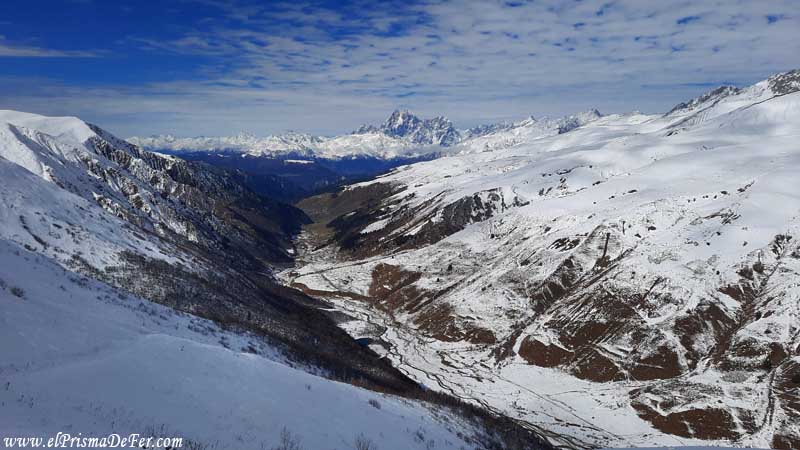
The subsequent descent is equally intense and attractive with the views we have on the other side, as we descend towards the valley with a wall of mountains in front of us.
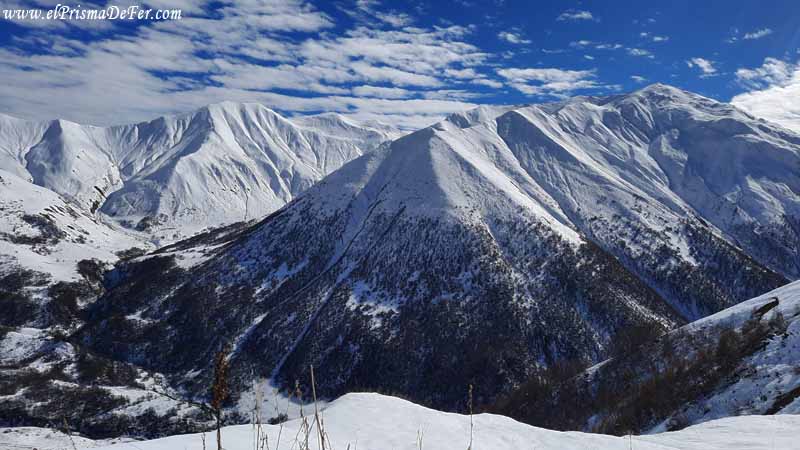
Once we finish the descent, the trail passes through a mostly flat valley. The goal is to reach Iprari, a village slightly larger than Adishi that offers several guesthouse accommodation options.
Day 4: Iprari – Ushguli
| Distance |
| 12 km |
| Estimated time |
| 4 hours |
| Elevation Profile |
| From 1.800 mts to 2.200 mts |
The final stretch of the trek is quieter than the previous day, and not as attractive. The trail runs through valleys and small villages that retain the essence of Svaneti, with stone houses and the ever-present medieval towers that guard the landscape. The trail has no steep climbs and runs not far from the road where cars pass.
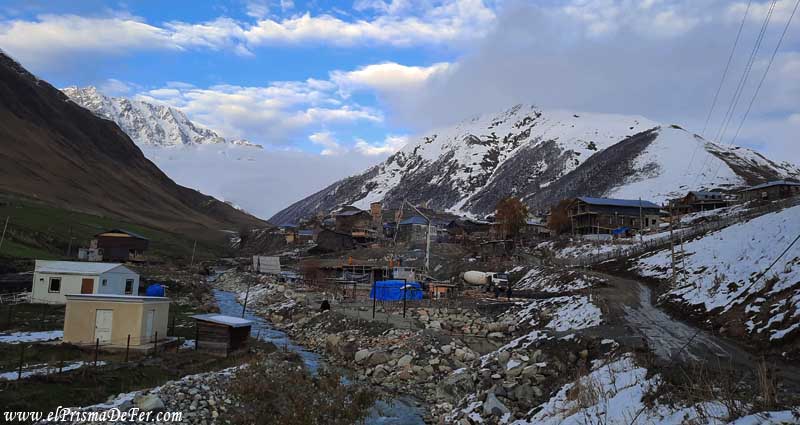
Arriving in Ushguli is one of the highlights of the trip. Considered one of the highest inhabited villages in Europe (around 2,100 meters), Ushguli is surrounded by towering mountains and glaciers, with Shkhara, Georgia's highest mountain, as a backdrop. Walking through its dirt streets, lined with towers that look like something out of a medieval tale, is the perfect ending to the journey.
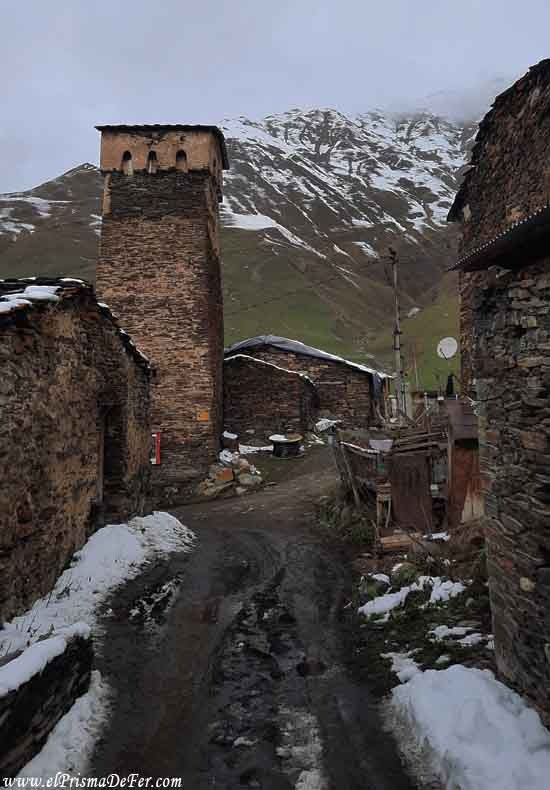
I recommend staying at least one night in Ushguli to enjoy its unique atmosphere and explore the surrounding area. I stayed with my traveling companions at the Old Tower Guesthouse, a unique place where they even used the medieval tower as a warehouse, which gave the accommodation a special charm.

What to do in Ushguli
Beyond being the end of the famous trek from Mestia, Ushguli is a destination in itself. Declared a UNESCO World Heritage Site, this cluster of villages in the heart of the Caucasus is striking with its medieval appearance, stone towers, and the feeling of being in a remote corner of the world. Strolling through its dirt roads, surrounded by snow-capped mountains, is an unforgettable experience.
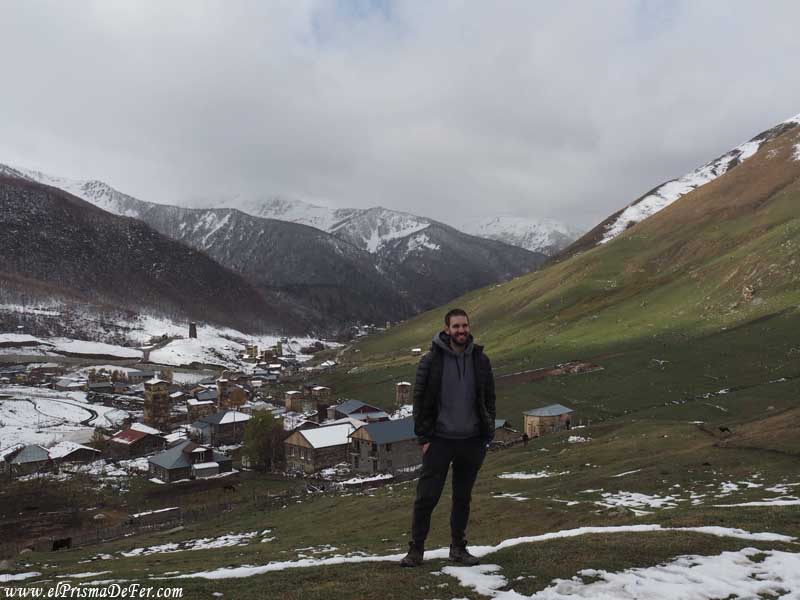
One of the most recommended activities is hiking to the Shkhara glacier, which is located just a few hours from Ushguli. The trail starts in the village and follows the valley until it approaches the glacier, offering stunning views of Georgia's highest mountain (5,193 m). It's an easy, scenic hike, ideal for those who still have energy left after trekking or for those arriving directly by car from Mestia.
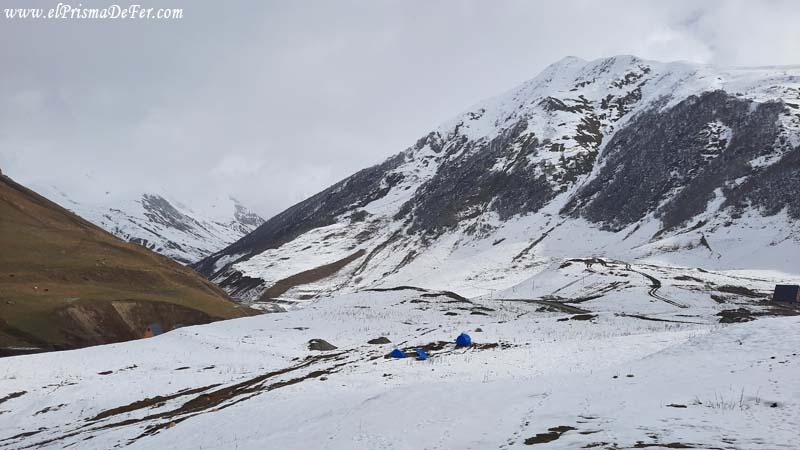
In Ushguli itself you can also visit its medieval churches, such as Lamaria, which dates back to the 9th century and stands at a high point with spectacular views. This small temple is one of the symbols of the area and offers a glimpse into the spirituality and history of Svaneti.
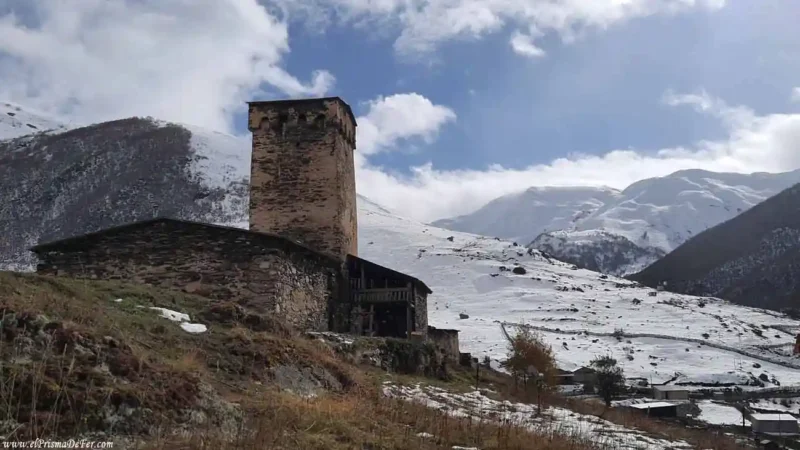
Ushguli is also perfect for immersing yourself in local life: chatting with the locals, trying traditional dishes in guesthouses, or simply observing how shepherds and farmers maintain ancient customs. In summer, the valley is filled with green pastures and free-roaming horses; in winter, the snow transforms the landscape into a postcard from another time.
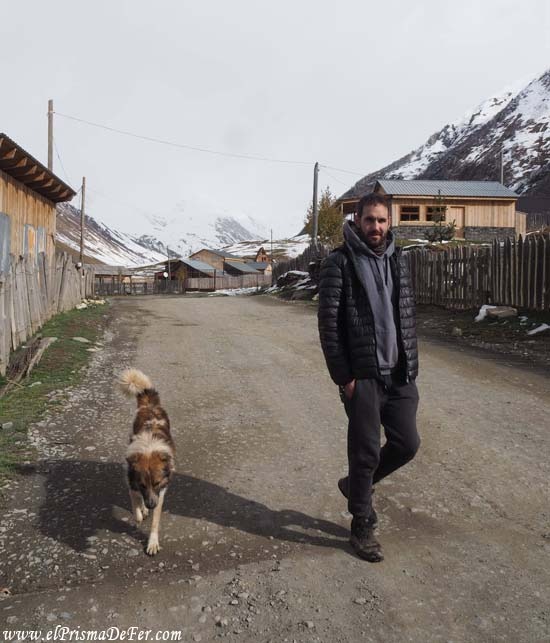
Finally, many travelers take the opportunity to explore the surrounding area on horseback or on short excursions to nearby villages. And if photography is your thing, every corner of Ushguli is a perfect backdrop: stone towers, children playing in the streets, snow-capped mountains, and a unique atmosphere that combines isolation and tradition.
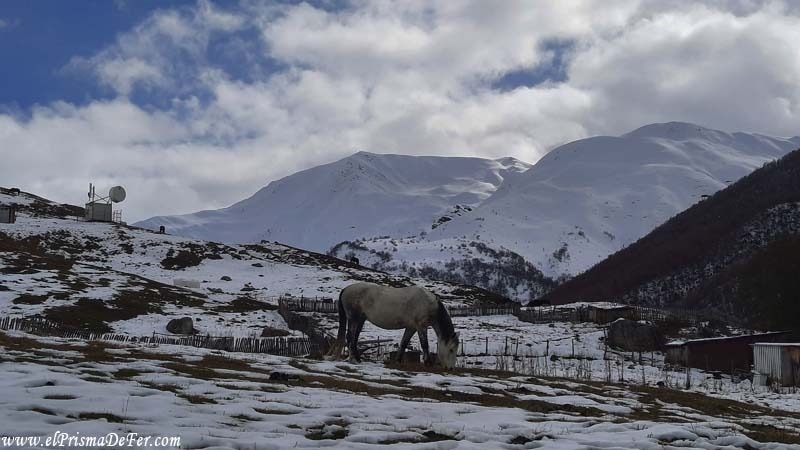
How to get back to Mestia from Ushguli
Returning to Mestia from Ushguli is fairly straightforward, and there are several options, depending on your time and energy level after trekking.
The most common way is to take a shared vehicle or local taxi, which usually travel the route several times a day. These cars pass through the intermediate villages and allow you to reach Mestia in about 3 to 4 hours, depending on the weather and road conditions. The estimated price of the trip was 80 leri, which is then divided among the total number of passengers (4 to 6).
If you prefer to stay in touch with nature, it's also possible to walk back, following the same trekking trail, although this option is more physically demanding and requires good weather and preparation.
In any case, it is advisable to coordinate with the Ushguli guesthouses: many offer assistance with obtaining transportation to Mestia or even have their own vehicles that transport guests. It's also helpful to ask other travelers in the village, as routes and schedules can vary depending on the season and road conditions.
Conclusion and personal reflection
I loved the trek from Mestia to Ushguli. The views of the snow-capped mountains gave the trip an epic feel, although I'm sure it must also be stunning in summer, with green meadows and glaciers glistening in the sun. The medieval villages, with their stone towers, add a unique touch that makes you feel like you're walking in a place frozen in time.
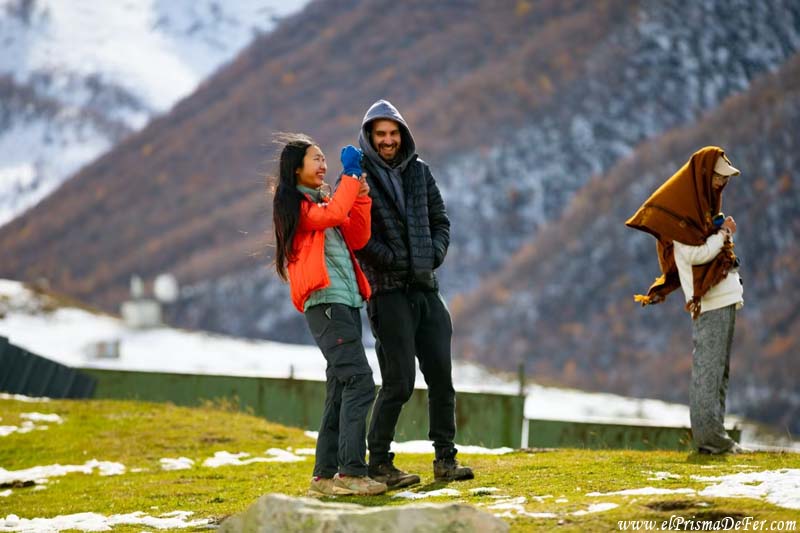
Furthermore, this experience had a very special personal plus: I met a group of travelers from China, who were on a long trip like mine, so we were able to meet up and connect later. After the trek, we spent several days together exploring Georgia and Armenia, sharing accommodations, meals, and adventures. Being used to traveling alone, that encounter and the connection with them added value that made this experience even more unforgettable.
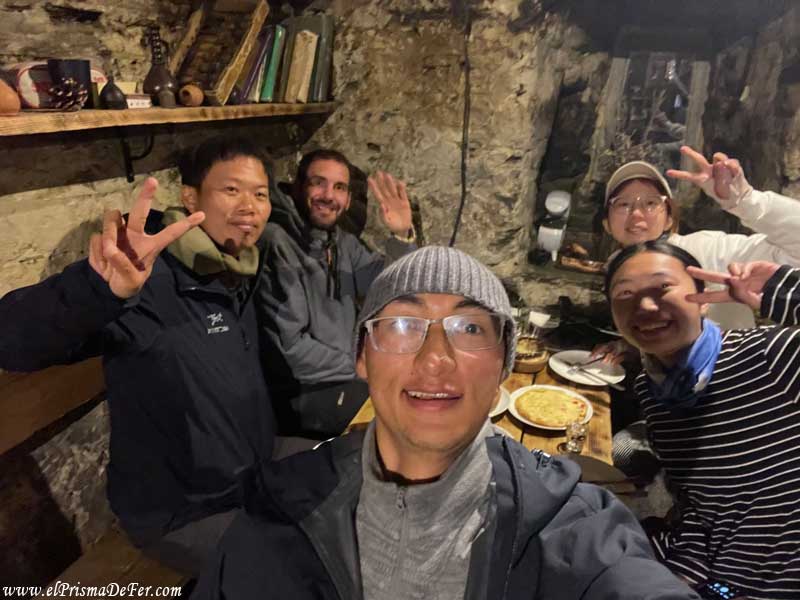
In short, hiking through Svaneti, discovering Ushguli, and experiencing its people is much more than just trekking: it's a perfect combination of landscape, history, and human connection that leaves memories to last a lifetime.
Support The Prism of Fer!
Your support helps me continue creating free content on the blog. Thank you so much!


